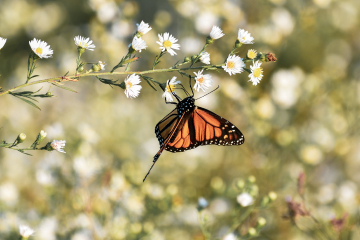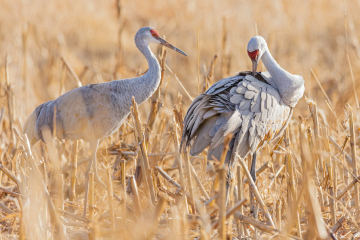A New Tool For Wetland Management: Drones

Herbicide application has long been used as a tool to enhance wetland habitat in the Rainwater Basin. Spraying an appropriate chemical, such as aquatic glyphosate, often produces bare ground. This can create the opportunity for more desirable, moist-soil plant species to flourish. In the Rainwater Basin, moist-soil dominated plant communities are desirable because of the large amount of seeds produced, which are a high-quality waterfowl food. Some examples of high-quality moist-soil species include Smartweed, Barnyard Grass, Spikerush, Plains Coreoposis, and Beggarticks.
Herbicide is typically used in the fall when the growing season for desirable plant species has pretty much ended and the growing season for invasive late-successional wetland species (such as Reed Canarygrass, River Bulrush, Hybrid Cattails, etc.) is still ongoing. Herbicide application is most effective when done in consecutive years because the chemical does not impact the seed back. So, spraying the newly emerged growth the second year before it seeds out increases efficacy of this treatment method.
In past years, the Rainwater Basin Joint Venture (RWBJV) contracted out herbicide application across the Rainwater Basin via aerial spraying or ground spraying. Aerial spraying has always been completed by either fixed-wing aircraft or helicopters. But this year, you can expect to see a different type of aircraft spraying Rainwater Basin wetlands. For the first time in 2023, the RWBJV has hired a drone company to complete our 2023 Fall Spraying Contract. Volitant Drone Technology Solutions will be spraying 617ac of wetlands in Adams, Butler, Clay, Fillmore, Phelps, Polk, and York Counties this fall. These sites are a mix of public lands (state Wildlife Management Areas) and private lands.
There were multiple reasons that the RWBJV opted to hire a contractor with drones to spray Rainwater Basin wetlands this year. We require a specially-formulated type of herbicide (aquatic glyphosate) that is safe to use in wetland soils. The production of many generic varieties of this chemical has ceased in recent years. Name-brand aquatic glyphosate is still available, but cannot be sprayed by a fixed-wing aircraft. Herbicide application with drones can be more efficient than traditional aerial spraying. Due to their smaller size, drones can more efficiently spray small, irregular-shaped areas (which describes many of the Rainwater Basin wetlands).
Each drone is lightweight, but powerful enough to lift a 10–15-gallon tank. The maximum flying speed of multi-rotor drones varies between 10–30 miles per hour. They are usually flown 7–12 feet above the ground or canopy of the plants. Because drones can fly so low over the wetlands, there is less drift. The drone rotor generates a strong downward rotating airflow. When spraying herbicide, it can form a turbulent area below while turning and shaking the plant canopy, so as to increase the penetration of herbicide below the canopy.
And finally, drones are operated by ground remote control or GPS flight control, so that spraying operators can operate remotely to avoid the danger of exposure to chemicals and improve the safety of spraying operations. All drone operators are licensed pilots who are also certified commercial chemical applicators.
Drones could have many other applications in wetland management (mapping, monitoring, seeding, etc.) as well. The RWBJV is excited to apply this technology to herbicide application this fall and consider other possible uses in the future.




